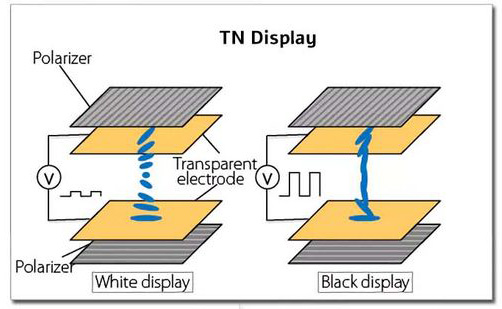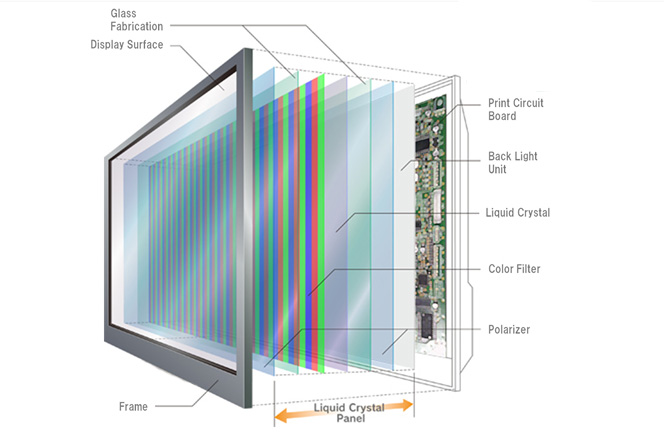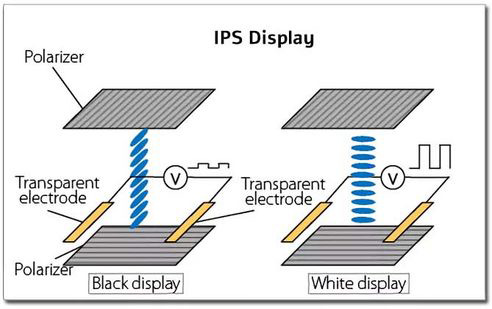Liquid Crystal Display (LCD) screen is characterized by small size, thin, lightweight, energy-efficient, wide viewing angle, no flicker, and can be directly matched with CMOS integrated circuit, which makes it dominant in the display world.
According to the display technology, there are many different types of LCDs, including TN, STN, TFT, IPS, etc. How do they work, and what’s the difference between them?
TN (Twisted Nematic) LCD is a kind of monochrome LCD display technology that can be used as a positive or negative display mode. It contains two polarized filters, and nematic liquid crystal elements that are inside two glass substrates. When nature's light goes through the front polarizer to meet with the nematic liquid crystal cells, it twists 90-degree, and passes through the rear glass to arrive at the rear polarizer. In this way, it controls the TN LCD panel on and off, and lets us see the light. As one of the oldest LCD display technologies, it has lower cost, and faster response time, but suffers from limited viewing angle, so it is mostly used in the low-end market, such as LCD panel terminals.

STN (Super Twisted Nematic) LCD is characterized by the use of passive-matrix monochrome pixels. It differs from TN LCDs only in the twisted composition as it uses a 180-to-190-degree twisted composition for its pixel. STN LCDs produce sharper contrast, and require less power, but they are more expensive and have slower response speed than TN LCDs. They are typically used in inexpensive mobile phones and digital information display screens.
TFT (Thin Film Transistor) LCD is one of active matrix LCD that uses thin-film transistor technology to create images and improve image quality. The liquid crystal molecules are filled between two parallel glasses. Two polarizer filters, color filters (RGB, red/green/blue), and two alignment layers decide the amount of light that is allowed to pass and which colors are created. TFT LCDs have excellent performance with minimal energy consumption, faster and more accurate response time, and sharp visibility. Thanks to TFT technology, it makes more display devices possible like televisions, laptop monitors, CDs, DVDs, etc., and also makes the world more colorful.
IPS (supper fine TFT) LCD is a variant of TFT LCDs that have liquid crystals to switch in and out of a plane, which leads it to reign supreme in regards to the great color performance and ultra-wide viewing angles. Whereby, IPS LCD panels become the preferred choice of those who value image quality and super-wide viewing angles, such as professional applications dealing with graphics, monitors for gaming, high-level business use, etc.
Although there are many kinds in the LCD panel technology family, and they might get things confusing, you still can find the best for your needs.
Previous:Which Is Better, DLED Or ELED?
Next:Why You Need a Dual Purpose Smart Board with PolyVision Ceramic e3 Surface?


